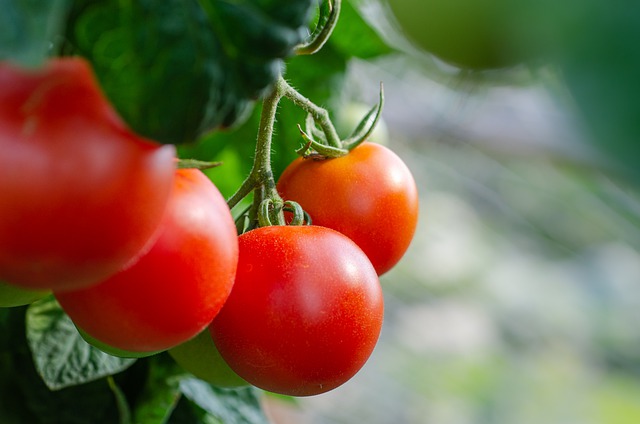July 7, 2021
By Lynda Kiernan-Stone, Global AgInvesting Media
Once overlooked as a viable alternative to the growing issue of providing food for an ever-populous world, Controlled Environment Agriculture (CEA) has gained much traction as of late, especially since COVID-19 has highlighted the vulnerability of existing ag supply chains.
As investors and retailers seek out more sustainable ways to invest in and scale agriculture, nothing reflects this traction, investment opportunity, and potential more than Equilibrium Capital’s latest announcement of the close of its Controlled Environment Foods Fund II (CEFF II) at $1.022 billion.
Notably, Dave Chen, chairman of Equilibrium Capital, told GAI News that this fund is driven fully by institutional investors (with five of these investors representing 50 percent of the fund) – and without the use of placement agents or external sales help – something nearly unheard of in an industry where venture capital has been the main source of funding.
“AppHarvest was an event that signaled a change,” said Chen, “it signaled a different way of thinking.”
Surpassing its initial target of $500 million by more than 100 percent, through CEFF II Equilibrium is pioneering the development of CEA into an institutional asset class, which like its predecessor CEFF I, is providing large blocks of capital to leaders in greenhouse agriculture and CEA, enabling their operations to scale at a matching pace to market growth.
“Agriculture is ground zero for sustainable use of our natural resources, climate risk, and climate adaptation,” said Chen. “In the next decades, the agriculture industry, globally, will be called on to provide more food, more safely, of higher quality, with greater diversity, in a more climate challenged world with a shrinking arable, and more inhospitable, landscape. CEA addresses many of these emerging global realities.”
As climate change intensifies and demographics shift, the world is seeing changes in food demand at the same time that it is seeing a constriction of arable land and natural resources. CEA shifts agricultural production away from a land-based industry where geography and weather determine what can be grown, and the quality of resulting crops, into a climate-resilient industry that can focus on meeting consumer demand for fresh, safe, and regional vegetables and fruits.
The need for this shift is ever more evident as much of the Western U.S., especially California and the Southwest, are being sledge hammered by drought of epic proportions. Farmers along the Rio Grande were being pressured to not plant their crops this year, as California’s farmers are being warned that their water supplies may be shut off. Ranchers are having to transport water in for their herds, or cull their animals due to lack of water or pasture, and on the Oregon border, farmers are pitted against Native American tribes over water rights and the protection of endangered fish species.
CEA provides a range of solutions that can decrease these pressures and the environmental footprint of food production, using 90 percent less water while being as much as 30 times more productive per acre compared to traditional agriculture.
“In the places that are most water stressed, like Utah, for example, they are needing to get the most bang for the buck,” explained Chen to GAI News. “So all the ancillary crops are being cut, with the available water being allocated to only the most important crops.”
And as the gravity of these issues intensifies for both consumers and food producers, it is expected that advanced greenhouse technologies will see greater adoption and integration across the U.S., the EU, Japan, and other major markets.
“Technology mitigates the biggest driver of volatility in quality and supply in agriculture, the weather,” noted Equilibrium Capital in a company statement. “Additionally, CEA puts agriculture on the technology productivity curve which directly impacts cost, quality, and consumer experience. CEA technology is shifting agriculture from a fragmented land centered grower industry into scaled produce production infrastructure.”
Equilibrium has a global presence with offices in Portland, Oregon; San Francisco, California; London, England; and its newest office in Singapore, however, CEFF II will primarily invest across North America, with key areas of interest being the more mature high wire crops of tomatoes, peppers, cucumbers, along with the more emerging categories of leafy greens and strawberries.
So far, the fund has made three investments – two in the U.S., and one in Mexico. But, Chen told GAI News, that with an extensive pipeline in place, and an industry in flux and flush with attractive assets, the next six months will prove to be a very active and dynamic period for the fund.
– Lynda Kiernan-Stone is editor with GAI Media, and is managing editor and daily contributor for Global AgInvesting’s AgInvesting Weekly News and Agtech Intel News, as well as HighQuest Group’s Oilseed & Grain News. She can be reached at lkiernan@globalaginvesting.

Let GAI News inform your engagement in the agriculture sector.
GAI News provides crucial and timely news and insight to help you stay ahead of critical agricultural trends through free delivery of two weekly newsletters, Ag Investing Weekly and AgTech Intel.




